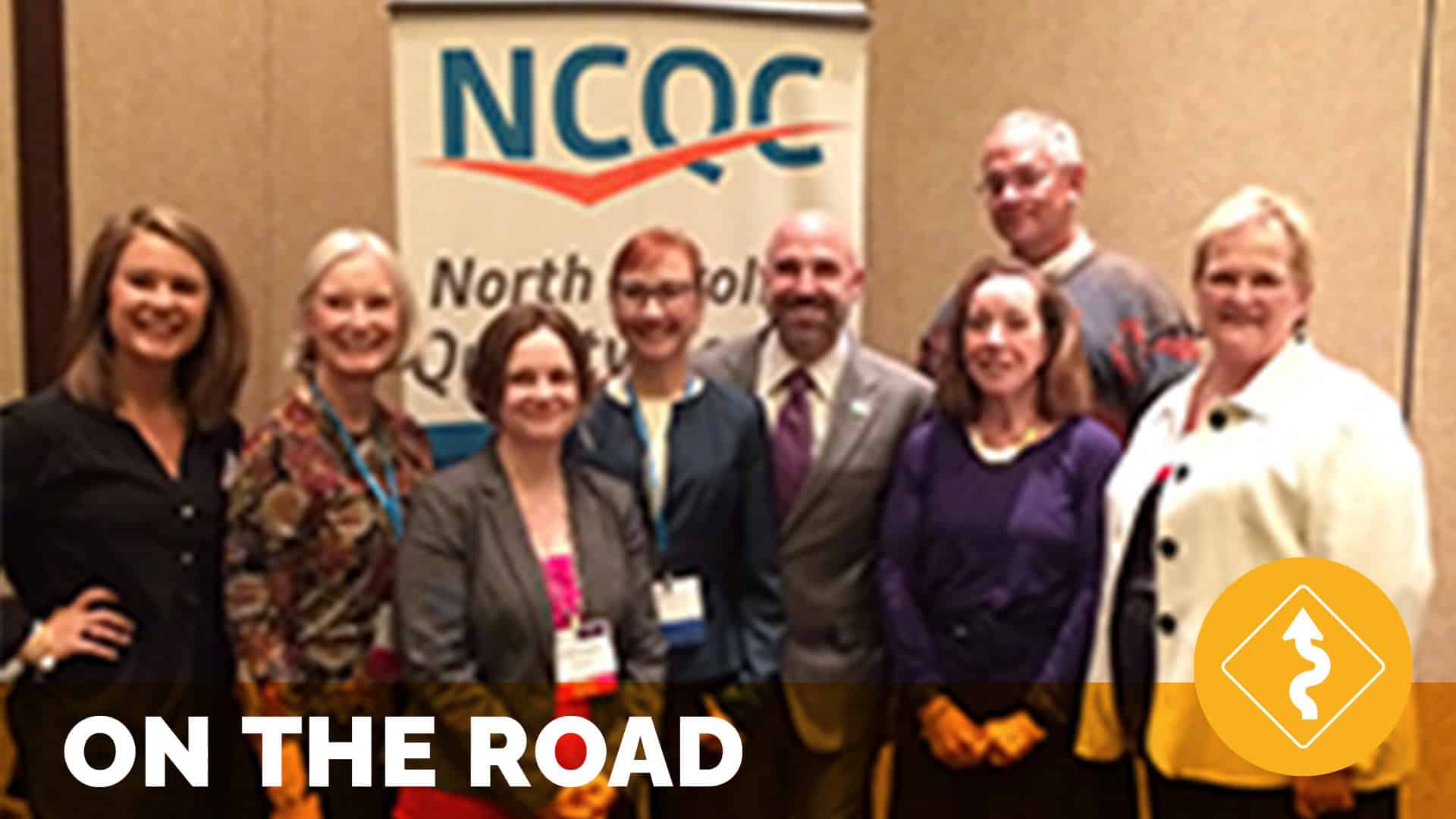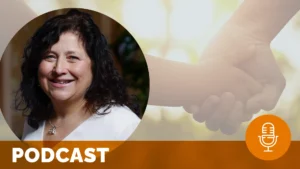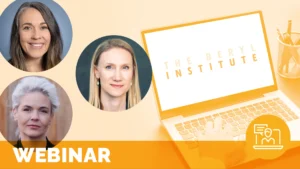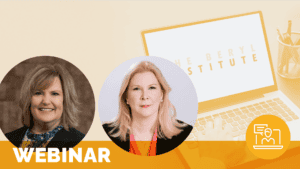The Power of Gathering

On the Road with North Carolina Quality Center – February 2016
by Jason Wolf
Every so often on our On the Road journey I find myself at an event, versus just visiting a single organization. While we are engaged in many events a year, there are rare occasions when the work taking place provides a unique angle and insight not only into work being done to positively impact patient and family experience, but how – together – we can better do the work. My most recent instance of this was in participating in the inaugural Patient and Family Engagement Summit hosted by the North Carolina Quality Center (NCQC). I too must share I was honored to be asked to be the closing speaker to end the conference day.
This event was not typical of many of the statewide gatherings I have had the honor to attend where healthcare leaders come together to work issues. While this is a valuable exercise, what was powerful and unique about the summit was not simply its focus on patient and family engagement and experience, but the fact that its participants represented the very audience of this critical work. It was not simply a gathering on how we do to or for, but by the very nature of the event, bringing together so many participants who were patient and family advisors (PFAs); it became a conversation on doing with.
This idea is fundamental to success in experience work and something we continue to both work to elevate and truthfully aspire to in our own actions via the Institute every day. What it underlines is that there is power in gathering – in bringing together the key voices of this work to be in dialogue. We cannot and must not fear the power of all voices coming together. In fact, this is the only way in which we can affect the greatest change and drive the best in outcomes in our work.
What my visit to the summit revealed was that in the power of gathering, we find kindred spirits, fellow learners, experts from which we can glean nuggets for action or strategic inspiration. I also saw that we have the opportunity to hold these similar conversations in our various geographies – be they statewide, regionally or even in individual cities. In bringing together the voices of those providing and those receiving care we hold a space in which issues can be raised, ideas formulated and opportunities for action realized. This is the essence of community through which we can shift the patient experience conversation fundamentally.
All Voices Matter
While for me the commitment to holding a gathering of this type may be a central lesson learned from this experience, as a participant in the event I was also able to listen to and engage with a variety of voices. While I will not report out on every session I attended, I can say the intentional nature of the program in getting to the essential issues of both the ‘hows’ and ‘whys’ of engagement as well as the impact it drives was key.
In almost every session the voice of the patient and/or family advisor was present, adding a level of dimensionality is often not found at healthcare conferences. While a novel concept in some ways, it must be a fundamental concept moving forward and the summit reinforced this idea beautifully. How are we engaging our own patient and family members in learning at the local level? Does training in your organization include these voices in your work? If not, when will you start?
Sessions covered the spectrum from bringing patient and family engagement to the bedside to the evolving role of the patient and family advisor. As more organizations identify this component of the patient experience as critical, we find more searching for answers on how to do it effectively. The increased activity indicated in the lessons learned and shared also substantiate the findings of our State of Patient Experience research via the Institute in which we saw the use of patient and family voice, specifically in councils and in formal advisory roles, showing some of the most significant growth in the last two years.
As I looked across the lessons shared, some key points did emerge:
- You must tackle the opportunity of engaging patient and family voice with unwavering commitment at all levels.
- Leadership, while perhaps not the catalyst for action, must provide the ongoing support and resources to ensure sustained success.
- Advisors can play a role in any aspect of the organization you can imagine and it is in the willingness to be “vulnerable” as an organization in which you have the greatest opportunity for positive impact and desired improvement.
- Consider starting with proof of concept, i.e., many of the stories shared provided real tangible contributions and outcomes derived from the engagement of patient and family voice. Where can you find that opportunity to show value quickly?
- In almost every instance culture not only plays a factor in how PFAs are engaged, but in the inverse PFAs also play a critical role in helping shift organizational culture.
- Improvement efforts can follow many methodologies from processes such as root cause analysis or lean and from data points including surveys and focus groups, but what matters most is what you are willing to ultimately implement, measure and reassess with intention.
As we stress patient experience is a macro opportunity in general, so too is the engagement of patients and families. As one speaker shared, “This is not an initiative, but rather experience (patient and family engagement and centeredness) is part of everything we do.”
These key ideas were framed by the contributions of two thought provoking speakers who helped push our thinking of the issue around all voices matter – Dr. Ronald Wyatt from The Joint Commission and Tanya Lord, Patient Advocate and Director of Patient and Family Engagement for The Foundation for Healthy Communities.
Equity in Health & Healthcare
Dr. Wyatt raised a very critical issue – which I have come to dub “the invisible patient experience”. For all we do to address patient experience in healthcare organizations, we most often are focusing on what we see at or above the surface. This is not a criticism of tackling what we can identify or even prioritize in our current hectic and chaotic healthcare environment, but rather, as I believe Dr. Wyatt did effectively, it is about building, raising and expanding an awareness of the issues that may not be evident, but have fundamental impact on our experience efforts.
In his conversation on the impact on equity in healthcare today, he challenged the audience to think about the broadest extent of a fundamental tenet we espouse via the Institute ourselves – all voices matter. More so he underlined the very tenets of care that touch on all trying to engage in the healthcare system: Coordination, Activation and Personalization. In providing for coordinated efforts, focusing on engaging, or more so activating those in care and providing a sense of personalization to the work, we create better avenues for outcomes overall.
In fact, the idea of equity itself is played out in those words. But first, as Dr. Wyatt asserted, we must acknowledge that there is in fact great inequity in healthcare today. Social determinants of health are real, issues around access to care are real, so this too ways heavily on what we see as engagement or experience overall. If we only strive to engage those we see or provide for the experience of those we serve, then do we actually push those we do not see or serve due to these issues further away. That for me is the invisible patient experience of which I speak and to which Dr. Wyatt challenged us to explore.
When we acknowledge that race is an independent factor in health (and as Dr. Wyatt noted death) and that poverty or access to resources play a role as well, we then must address experience with a much broader and conscious set of lenses. It changes how we plan, act and evaluate the work of healthcare itself.
So the lesson, while more complex and requiring much more room to explore than I can here to do it full justice, can also be put into the context of the summit on engagement itself. More so I see it as a consideration in how and what we do to engage PFAs as well. Are we pulling in voices that represent all we can and must serve or only those that we see? We have a great opportunity to expand our discussion around, commitment to and action on the invisible patient experience as we strive to provide the best in experience for all in healthcare today.
What I find significant in this as well was that even those clearly visible and present to the general practices of the system too find their voices diminished. This is all too often a challenge raised by PFAs as they serve to guide and enlighten the organizations with which they work. It was also exemplified in the story shared by Tanya Lord.
Engaging Patients and Families for Safety
Tanya Lord was introduced as authentic and I will be as bold to declare her as “authenticity personified”. Her commitment and personal journey after the loss of her beautiful son Noah represented in the story she tells and the challenges she raises is profound, yet so simple. We all too often overlook the voices right in front of us in our desire to provide better experiences and better outcomes. While the synopsis does not do it justice, Tanya was a concerned mother with a sick son whose encounter with her healthcare providers left her voiceless even when speaking and lead to tragic results. It exemplified and personalized the very challenges we often see in healthcare about linking our clinical and scientific world to the essence of humanity the huddles at its core.
Tanya’s message was clear, “patient and family members are one of the most underutilized assets in our healthcare system today”. This is due to a few things, not knowing how to engage the voices, the unwillingness to ask, the fear of vulnerability it opens or the purpose in which you will move it forward. Underlying this premise though the purpose is clear. While never stating it directly, Tanya’s powerful insinuation is that we MUST listen, whether in formal or informal settings to provide the best in outcomes. She posed a tough, but real question to the audience about our desire to improve in healthcare with those we seek to benefit from the improvement. As she offered as an example, “If we work to make improvement in outcomes, for example, with fall rates, where are the people that fell?”
Her point is that we have not just systemic opportunities to engage the voices of PFAs, but to create living and real time opportunities for listening and involvement. In this, she also offered strongly that if we are to engage patient and family voice we cannot use them simply to identify problems, but rather the greatest value is in these voices helping to lead us to solutions.
Tanya’s authenticity manifests itself not only in the story she shares or in the journey and path it set her on, it also is seen in her passion as she challenged the audience to think about what each of us could do to make a difference. She added, “I did not select this path, but I have chosen my purpose” and in that manner she reinforces it is not about her story, but about what her story – Noah’s story – represents in what we can do going forward. This was perhaps summed up in no better way than her closing challenge to us all in a quote from Eleanor Roosevelt, “Do one thing every day that scares you!”
An Innovation to Model – NCQC Patient and Family Advisory Council
The quote Tanya shared has been one that has to me been the rallying cry for innovation itself. It is at the edge of the unknown, at even these points of fear, where great innovation happens and NCQC took a bold step to bring an innovation to healthcare that is both common, but innovative and unique. While the concept of having PFAs involved in organizations and specifically Patient and Family Advisory Councils (PFACs) has long been an idea in healthcare and gaining greater strength and presence daily. This still has been a relatively local issue – addressed differently from organization to organization.
What NCQC did was take it to a macro level by creating one of the first statewide PFACs to guide their broader efforts in informing institutions across North Carolina on the critical opportunities related to Patient and Family Engagement. This was exciting to learn about as we at the Institute have been on a similar journey establishing our own Global PFAC in the summer of 2013. I remain steadfast in my belief that while these broader councils are not addressing the day-to-day of front line healthcare issues, they too play a vital role in shifting the conversation to ensure patient and family voice is central to any organizational considerations or action. This is not a simple commitment, but instead an intentional effort to reinforce the point from where we started – that all voices matter.
I had the chance to sit down with six of the members of the NCQC Council and while I will not share each story individually, I can share that they exemplified the true power of what a council at the local or macro level can bring. While each was inspired by their own personal situations, they too brought a strong sense of alignment to purpose and intent. This perhaps is the most profound lesson overall. That if we move beyond the story PFAs bring – not to leave it behind, but to honor it as foundational, catalyzing and the inspiration for action, we find human beings with incredible motivation beyond their own situation.
This helped reinforce for me, and I hope for all those looking at how to maximize their use of a council, that we must consider what the purpose of participation of members truly is and what they hope to achieve as a result. In asking the group they shared:
- They were collectively committed to making life better for all in the healthcare experience – patient, family and provider/caregiver alike.
- That they too wanted to reinforce critical practices and tactics that are seen as positively impacting outcomes.
- They desire to shift the nature of how we educate those in healthcare to understand the broader issue of experience.
- They hope to expand the dialogue to be inclusive of a broad range of voices focused on creating a better healthcare system overall.
And while this list is not inclusive of all their aspirations, it gets to the essence of their purpose. As one participant added, “We want to be as intentional as all the great examples we learned from all day, and we don’t want to waste any time getting there.”
Why This Matters
This sense of intention, innovation and urgency is not unique to this group and in fact underlines what I see as the state of efforts focused on experience excellence more so every day. This innovation at the statewide level is a model worth following and copying when other localities find themselves ready and willing to do so. More so the conversation I had with the PFAs was a fitting culmination of a day committed to reinforcing that all voices matter in the healthcare conversation and are essential to driving the best in experience for all.
If we can (and we should) act with that intentionality, sense of awareness, willingness to commit, openness to dream and the fire to act then great things are ahead for healthcare in general. When we shift our view from the policy constraints and financial burdens that all too often fog our perspective in healthcare, we find hope in broader paths forward. We cannot and should not avoid those challenges, but rather embrace them knowing we have a much broader set of voices to engage and in doing so can achieve great things for all in healthcare. The Patient and Family Engagement Summit helped us see just that.
Dr. Wyatt ended his talk with a poem by Joseph Malines, entitled The Fence or the Ambulance, which provided us with the vivid implications of the opportunity we have. It closes:
For the voice of true wisdom is calling:
“To rescue the fallen is good, but ‘tis best
To prevent other people from falling.”
Better close up the source of temptation and crime
Than to deliver from dungeon or galley;
Better put a strong fence ‘round the top of the cliff,
Than an ambulance down in then valley!
Special thanks to my hosts from NCQC, Dr. Carol Koeble, Executive Director and Tiffany Christensen, who led the launch of this important inaugural event. I appreciate the opportunity to participate, share my thoughts and tell your story. Thanks to the speakers, attendees and PFAC members for enriching and inspiring conversations and for the lessons we all learned together. I hope you as a reader can pull a nugget or two from this to plant seeds, make changes or reinforce strengths in your organization. You are all the patient experience.
Related content
-
 Culture & Leadership
Culture & LeadershipBroaden the Scope of What You Consider Experience
Stacy Palmer, Senior Vice President & COO of The Beryl Institute, sits down with Pattie Cuen, Senior Vice President of Jarrard Inc., to discuss a recent consumer survey about public values in healthcare experience. Listen in as Cuen shares key insights and emphasizes the importance of seeing the bigger picture of experience by focusing on
Learn more -
 Culture & Leadership | Infrastructure & Governance
Culture & Leadership | Infrastructure & GovernanceAligning Experience to Drive Scalable, Sustainable Change
In today’s complex healthcare landscape, turning insights into meaningful action is critical. This webinar explores how experience alignment tools like journey maps, service blueprints, and prioritization frameworks can uncover hidden risks, align diverse stakeholders, and spark lasting transformation. Attendees will learn how these tools connect clinical, operational, and digital touchpoints, creating a clear, shared understanding
Learn more -
 Culture & Leadership | Staff & Provider Engagement
Culture & Leadership | Staff & Provider EngagementONE Sutter Experience of Care, a 3-Step Communication Standard
2pm ET / 1pm CT / 12pm MT / 11am PT – Sutter Health’s vision for Destination 2030 includes the ONE Sutter Experience of Care, a communication standard with three simple steps: Warm Welcome, Narration of Care/Service, and Fond Farewell. This approach ensures every person feels seen, heard, and connected throughout their care journey. Speakers
Learn more
